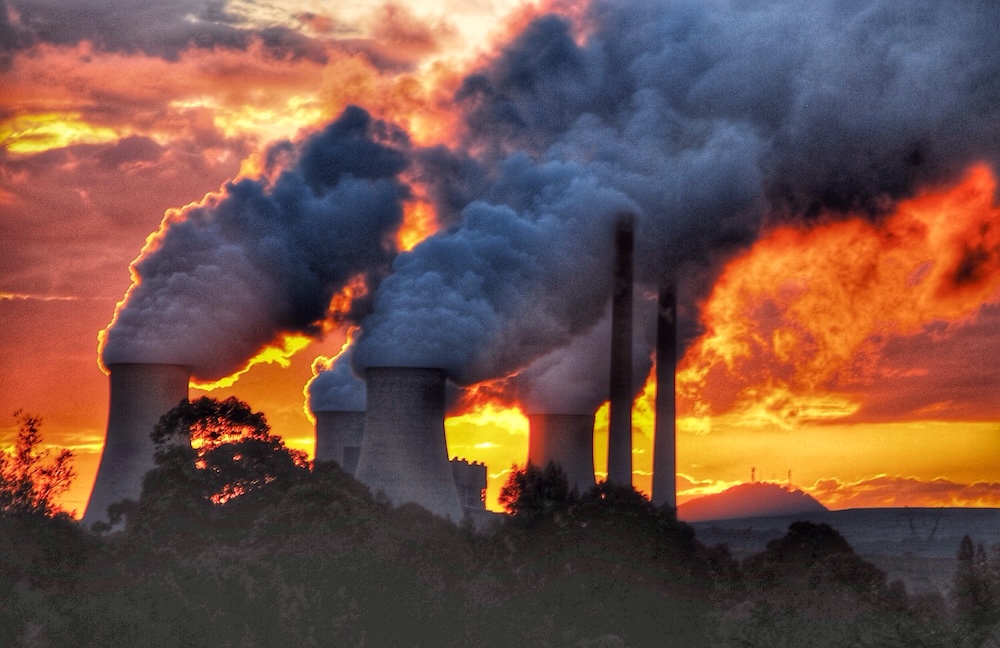What Happens When We Heat the Water and Walk Away
When we think of pollution, we picture black smoke, plastic waste, or oil spills. But one of the most overlooked — and most damaging — forms of pollution is invisible to the naked eye. It doesn’t leave behind trash, and it doesn’t smell. It doesn’t even make headlines.
It’s called thermal pollution, and it’s silently reshaping aquatic ecosystems around the world.
Caused by discharging heated water into natural waterways, thermal pollution creates a ripple effect of harm: suffocating fish, altering food chains, and triggering conditions that make waterways toxic. And yet, most people have never heard of it — let alone understood how much damage it causes.
What Is Thermal Pollution?
Thermal pollution occurs when industrial facilities — like power plants, refineries, factories, or wastewater treatment plants — use water from lakes, rivers, or oceans to cool equipment. Once that water absorbs heat from machinery, it’s released back into the environment at significantly higher temperatures.
While this sounds harmless compared to chemical dumping, the impact is anything but.
The problem?
Aquatic life depends on stable temperatures. Even small increases in water temperature can reduce oxygen levels, disrupt breeding cycles, and kill off entire species.
Why Warm Water Is a Big Problem for Ecosystems
Fish, amphibians, and aquatic plants evolved to thrive in specific temperature ranges. When water temperatures rise, the consequences are widespread:
🔻 Lower Oxygen Levels
Warm water holds less dissolved oxygen, which fish and other organisms rely on to breathe. Lower oxygen makes them more vulnerable to disease, predators, and death.
🐟 Mass Fish Kills
Sudden temperature changes — sometimes as little as 5°F — can trigger mass die-offs, especially in cooler-water species like trout or salmon.
🦠 Algal Blooms and Bacterial Growth
Warmer water creates ideal conditions for harmful algae and bacteria to thrive. Some algal blooms release toxins that can sicken humans, pets, and wildlife — and make drinking water unsafe.
🌱 Invasive Species Take Over
As temperatures shift, invasive species better suited to warmer waters often outcompete native species, disrupting food webs and collapsing ecosystems.
Examples of Thermal Pollution
- Indian Point Energy Center (New York): Drew billions of gallons of Hudson River water daily for cooling, then discharged it back warmer, devastating local fish populations. Now shut down due to ecological concerns.
- Nuclear and coal-fired plants worldwide: These plants are major sources of thermal pollution — especially in countries without strict environmental regulation.
- Urban areas and stormwater runoff: Even pavement can contribute by heating rainwater that runs into rivers and streams.
Despite its scale, thermal pollution is often left out of environmental conversations entirely.
Why Nobody Talks About It
1. It’s Invisible
You can’t see heat the way you can see trash or oil. A thermally polluted river can look perfectly clean — until fish start dying.
2. It Sounds Harmless
“Warm water” doesn’t sound threatening. It evokes comfort, not crisis. But beneath the surface, that warmth becomes a weapon against biodiversity.
3. It’s Not Regulated Consistently
Unlike chemical pollutants, heat doesn’t leave behind a residue — and many countries don’t require industrial sites to report thermal discharge in a meaningful way.
4. No Clear Villain
It’s hard to name a single company or source. Thermal pollution comes from widespread infrastructure — power grids, manufacturing, cities. That makes it easier to ignore.
Climate Change Makes It Worse
As global temperatures rise, many waterways are already warmer than they should be. Add thermal pollution on top, and ecosystems that were once stable collapse.
Plus, hotter environments make cooling systems less efficient, which leads to more water being pulled from rivers and oceans — and more heat being returned.
It’s a feedback loop: climate change worsens thermal pollution, and thermal pollution worsens ecosystem collapse, which undermines resilience against climate change.
Is There a Solution?
Yes — but it requires investment and awareness.
Cooling Towers and Closed-Loop Systems
Instead of discharging heated water back into nature, cooling towers and recirculating systems can lower water temperatures or reduce water use entirely. These technologies already exist — they just cost more to implement.
Stricter Discharge Regulations
Governments can establish temperature limits on industrial discharges and enforce penalties for violators.
Passive Cooling and Green Infrastructure
Urban designs that reduce pavement heat, increase vegetation, and capture stormwater can lower the temperature of runoff before it hits local waterways.
Shift Toward Truly Clean Energy
Many thermal pollution sources are rooted in energy generation. Transitioning away from coal, gas, and nuclear plants toward solar, wind, and geothermal energy eliminates the need for massive water cooling in the first place.
Final Thoughts: Heat Can Be Just as Harmful as Toxins
We don’t need to see barrels of waste floating in rivers to recognize pollution. Sometimes it’s the things we can’t see or don’t measure that cause the most harm.
Thermal pollution is one of the clearest examples of how modern industry offloads its waste onto nature in subtle, silent ways. If we truly care about clean energy, healthy rivers, and resilient ecosystems, we need to stop ignoring heat as a pollutant.
The water may look clear — but the damage runs deep.
FAQs About Thermal Pollution
What is the main cause of thermal pollution?
Industrial facilities, especially power plants, that use water for cooling and discharge it back at elevated temperatures.
How does thermal pollution affect fish?
Warmer water holds less oxygen, leading to stress, illness, reduced reproduction, and in some cases, large-scale fish kills.
Is thermal pollution regulated?
Regulations vary by country and region. In many places, there are few or no effective limits on heat discharge into natural waters.
How is thermal pollution different from chemical pollution?
It doesn’t involve toxins or waste substances — it’s heat alone. But the effects can be just as damaging to aquatic life.
What can individuals do about thermal pollution?
Support clean energy initiatives, vote for strong environmental protections, and raise awareness about invisible pollutants like heat.









Reader Interactions